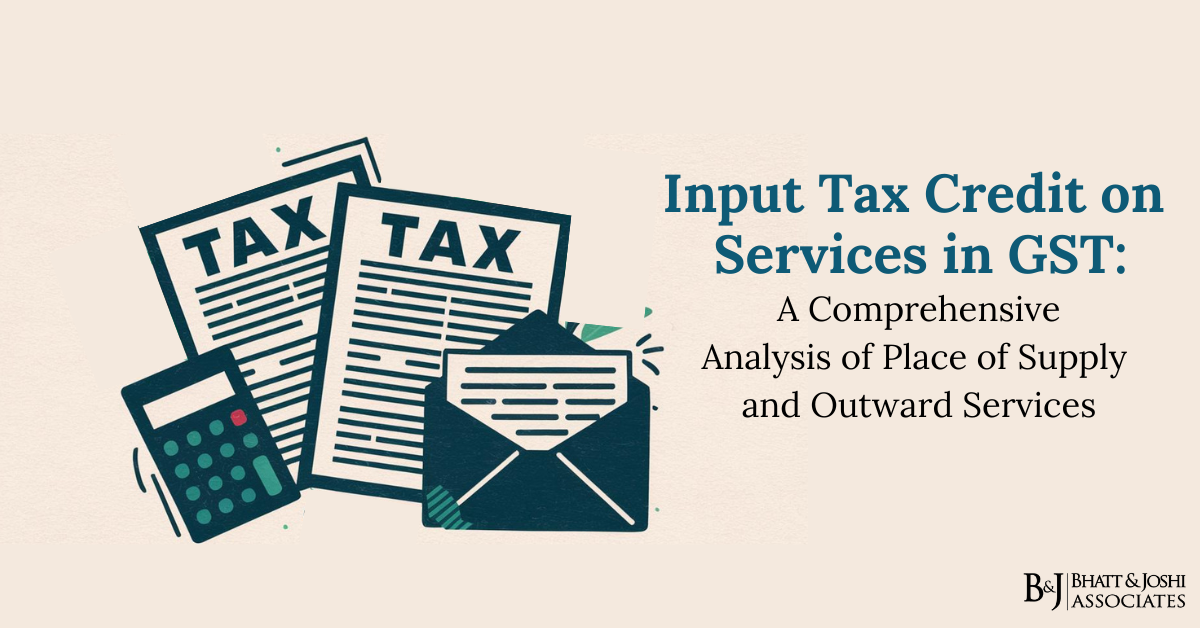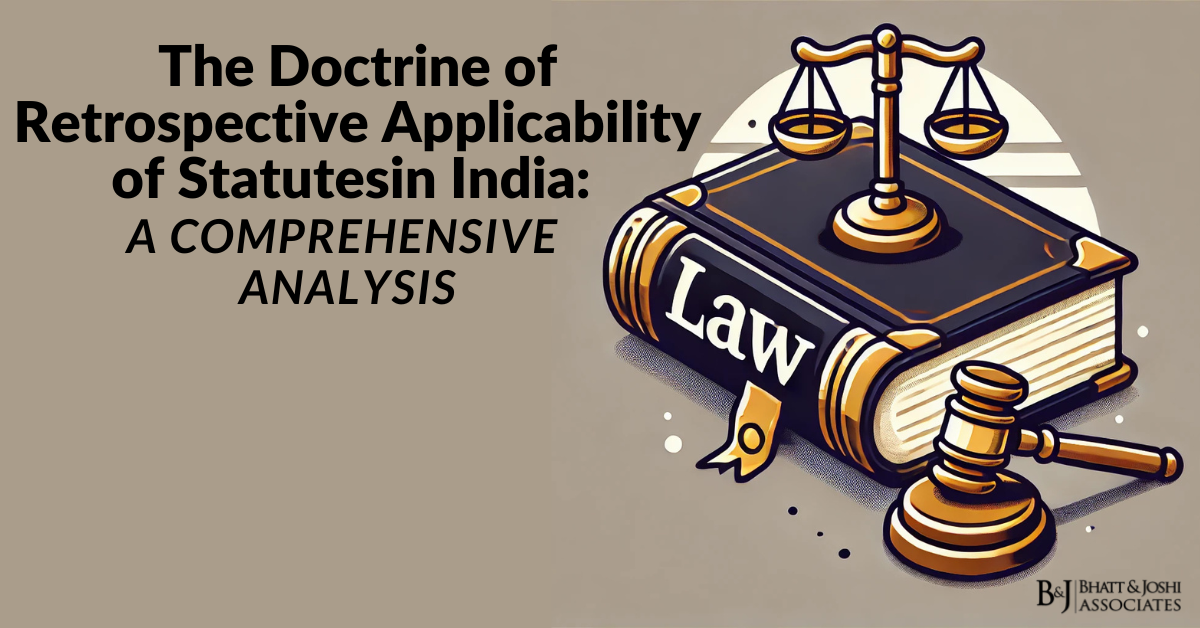Introduction: The Evolution of Input Tax Credit in Indian Taxation
The introduction of the Goods and Services Tax (GST) in India marked a paradigm shift in the country’s indirect tax regime. One of the most significant aspects of this transformation was the treatment of Input Tax Credit (ITC), which underwent substantial changes from the previous Cenvat Credit Rules, 2004 (CCR, 2004) system. This comprehensive analysis delves into the intricacies of ITC on services under the GST Act, with a particular focus on outward services and the critical role of the Place of Supply rules. The transition from CCR, 2004 to the GST regime has brought about fundamental changes in how businesses claim and utilize ITC, affecting various sectors of the economy and influencing business strategies across the board. Understanding these changes is crucial for businesses to optimize their tax liabilities and ensure compliance with the new regulatory framework.
Historical Context: The Cenvat Credit Rules, 2004
To appreciate the significance of the changes introduced by GST, it’s essential to revisit the Cenvat Credit Rules, 2004. These rules provided the framework for claiming Cenvat credit for Central Excise Duty and Service Tax paid on inputs, capital goods, and input services used in the manufacture of goods or the provision of output services. Key Definitions under CCR, 2004: Rule 2(1) of the CCR, 2004 defined “Input service” as: (i) Any service used by a provider of taxable service for providing an output service; (ii) Any service used by the manufacturer, whether directly or indirectly, in or in relation to the manufacture of final products and clearances of final products from the place of removal; (iii) Services used in relation to setting up, modernization, renovation or repairs of a factory, inward transportation of inputs or capital goods, and outward transportation up to the place of removal. The concept of “place of removal” was central to the CCR, 2004 framework. It delineated the extent to which services could be considered for Cenvat credit, particularly concerning transportation services. This concept led to numerous interpretations and legal disputes over the years.
Interpretation Challenges under CCR, 2004
The phrase “up to the place of removal” in the definition of input services sparked considerable debate. Some interpreted it narrowly, limiting it to transportation services, while others argued for a broader interpretation encompassing various services related to business operations. The case of M/s Ultratech Cements Ltd v. CCE., Bhavnagar (2007-TIOL-429-CESTAT-AHM) provided significant clarity on this issue. The ruling held that once final products are cleared from the place of removal, subsequent services cannot be treated as inputs. This interpretation effectively limited the scope of Cenvat credit for outward transportation services beyond the place of removal.
Transition to GST: A Paradigm Shift
The introduction of GST brought about a fundamental change in the approach to input tax credits. GST, being a destination-based consumption tax, shifted the focus from the place of removal to the place of supply. This change aligned the Indian tax system more closely with international best practices and aimed to simplify the complex web of indirect taxes that existed previously.
Key Features of ITC under GST:
- Unified Credit System: GST introduced a unified credit system, allowing seamless credit across goods and services.
- Destination-Based Taxation: The tax is levied where goods and services are consumed, accruing to the state of consumption.
- Multiple Tax Types: GST introduced IGST, CGST, SGST, and UTGST, with the applicable tax determined by the place of supply and the location of the supplier.
Understanding Place of Supply under GST
The concept of ‘Place of Supply’ is crucial in the GST framework as it determines the type of GST applicable to a transaction. It essentially refers to the location where goods or services are deemed to be supplied.
Key Aspects of Place of Supply:
- Intra-State vs. Inter-State Transactions: If the place of supply is within the same state as the supplier, CGST and SGST apply. For inter-state transactions, IGST is applicable.
- Customer Location: Generally, the customer’s location is considered the place of supply for GST transactions.
- Statutory Provisions: Sections 10 to 13 of the IGST Act, 2017 provide detailed rules for determining the place of supply in various scenarios.
Place of Supply for Goods
The IGST Act provides specific rules for determining the place of supply for goods:
- Movement of Goods: When supply involves the movement of goods, the place of supply is the location where the movement terminates for delivery to the recipient.
- Delivery to a Third Party: In cases where goods are delivered to a third party on the direction of the buyer, the place of supply is deemed to be the principal place of business of the third party.
- Non-Movement Supply: For supplies not involving movement, the place of supply is the location of goods at the time of delivery.
- Installation or Assembly: When goods are assembled or installed at a site, the place of supply is the location of installation.
- Supply on Board Conveyance: For goods supplied on board a conveyance, the place of supply is where the goods are taken on board.
Place of Supply for Services
Determining the place of supply for services is more complex due to their intangible nature. Section 12 of the IGST Act provides detailed rules for various scenarios:
- General Rule: The place of supply is typically the location of the service recipient.
- Specific Provisions: Special rules apply for services related to immovable property, performance-based services, events, transportation, telecommunications, and more.
- B2B vs. B2C Transactions: Different rules may apply based on whether the recipient is a registered person (B2B) or not (B2C).
Impact on Input Tax Credit
The place of supply rules significantly impact how businesses can claim and utilize Input Tax Credit:
- Inter-State vs. Intra-State Supplies: The type of GST paid (IGST, CGST/SGST) depends on the place of supply, affecting how credits can be utilized.
- Export Scenarios: For exports, special provisions apply, allowing for zero-rating and refund of input taxes.
- Bill To-Ship To Transactions: In complex supply chains, the place of supply rules determine who can claim ITC and on which tax invoice.
Practical Implications and Challenges
The transition to the GST regime has presented several challenges and opportunities for businesses:
- Complex Supply Chains: Businesses with multi-state operations need to carefully track the place of supply for each transaction to ensure correct tax application and ITC claims.
- Service Sector Complexities: The service sector faces particular challenges due to the intangible nature of services and the variety of place of supply rules applicable.
- Export Refunds: Exporters face new procedures for claiming refunds of input taxes, with the place of supply rules playing a crucial role in determining eligibility.
Case Studies and Examples of ITC on Services Under GST
To illustrate the practical application of these concepts, let’s consider some specific scenarios:
- Exported Goods: In cases where goods are exported, businesses can claim refunds for input taxes on services used in the export process, even if these services are used after the goods leave the supplier’s premises.
- Business Auxiliary Services: Services provided by overseas commission agents for facilitating exports can be eligible for ITC, provided proper documentation is maintained.
- CHA (Custom House Agent) Services: ITC can be claimed on services provided by CHAs for export shipments, including documentation and processing fees.
- GTA (Goods Transport Agency) Services: Transportation services for moving goods to ports or airports for export are eligible for ITC, with the invoice and lorry receipt serving as sufficient documentation.
- Port Services: Various services provided at ports, including terminal handling, documentation, and bill of lading charges, are eligible for ITC when related to export shipments.
Legislative Intent and Judicial Interpretations
The shift from the CCR, 2004 to the GST regime reflects a broader legislative intent to simplify the tax structure and reduce cascading effects. Courts and tribunals have generally interpreted the GST provisions in light of this intent, often favoring a more liberal approach to ITC claims, especially in export scenarios.
Key judicial principles that have emerged include:
- Furtherance of Business: Services that are used in the furtherance of business, even if used after the traditional “place of removal,” are generally considered eligible for ITC.
- Substance Over Form: Courts have often looked at the substance of the transaction rather than mere form when determining ITC eligibility.
- Export Promotion: In line with the government’s export promotion policies, courts have tended to interpret provisions favorably for exporters claiming ITC on various services.
Future Outlook and Potential Reforms
As the GST regime continues to evolve, several areas may see further refinement:
- Simplification of Place of Supply Rules: There’s potential for further simplification of place of supply rules, especially for complex service transactions.
- Enhanced Digital Integration: Improved digital infrastructure could streamline the process of determining place of supply and claiming ITC.
- Sector-Specific Guidelines: More detailed guidelines for specific sectors, especially those with complex supply chains, could provide greater clarity.
- International Harmonization: As global trade continues to grow, there may be efforts to harmonize India’s place of supply rules with international standards.
Conclusion: Navigating the New Landscape of ITC on Services under GST
The transition from the CCR, 2004 to the GST regime has fundamentally altered how businesses approach Input Tax Credit (ITC) on Services under GST and the concept of place of supply. While this shift has introduced new complexities, it has also created opportunities for businesses to optimize their tax structures and improve cash flow management.
Key takeaways for businesses include:
- Detailed Record-Keeping: Maintaining comprehensive records of all transactions, including place of supply details, is crucial for accurate ITC claims.
- Regular Review of Supply Chains: Businesses should regularly review their supply chains to ensure optimal tax structures in light of place of supply rules.
- Leveraging Technology: Utilizing advanced tax technology solutions can help in accurately determining place of supply and managing ITC claims.
- Staying Informed: Given the evolving nature of GST regulations and judicial interpretations, staying informed about the latest developments is essential.
- Professional Guidance: Given the complexities involved, seeking professional tax advice can be crucial, especially for businesses with complex supply chains or those engaged in international trade.
As the GST regime matures, it is expected to bring greater efficiency and transparency to India’s indirect tax system. However, this transition period requires businesses to be vigilant, adaptable, and proactive in their approach to tax management. By understanding and effectively navigating the intricacies of place of supply rules and their impact on ITC, businesses can not only ensure compliance but also optimize their tax positions in the new GST landscape.














